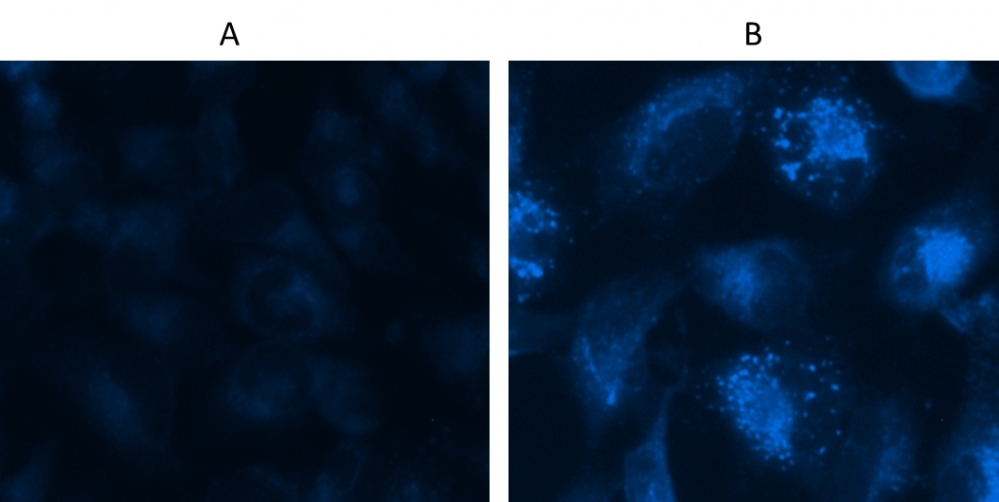Cell Meter™ Autophagy Assay Kit
Blue Fluorescence
Autophagy is an evolutionarily conserved degradation process that targets long-lived proteins, organelles, and other cytoplasmic components for degradation via the lysosomal pathway. The autophagy pathway is complementary to the action of the ubiquitin-proteasome pathway which typically degrades short-lived proteins. Activation of the autophagy pathway is required for multiple cellular roles, including survival during starvation, the clearance of intracellular components, development, and immunity. In the absence of stress, autophagy serves a house-keeping function, removing damaged organelles and cellular components preventing cytotoxic effects. Decreases and defects in autophagy have been implicated in multiple diseases, for example Huntingtons, Alzheimers, and Parkinsons. In terms of cancer development, autophagy seems to play multiple roles. Decreased or absent expression of certain autophagy proteins, such as Beclin-1 and Bif-1, increases tumor susceptibility in mice while the overexpression of these proteins can repress cancer cell growth. However, autophagy is critical for the survival of cancer cells within the nutrient poor and hypoxic core of solid tumors. Cell Meter™ Autophagy Kit employs Autophagy Blue™ as a specific autophagosome marker to analyze the activity of autophagy. The assay is optimized for direct detection of autophagy in both detached and attached cells. The kit provides all the essential components for the assay protocol. Cell Meter™ Autophagy Kit is suitable for fluorescence microscope, fluorescence microplate reader.


| Catalog | Size | Price | Quantity |
|---|---|---|---|
| 23000 | 200 Tests | Price |
Storage, safety and handling
| H-phrase | H303, H313, H333 |
| Hazard symbol | XN |
| Intended use | Research Use Only (RUO) |
| R-phrase | R20, R21, R22 |
| UNSPSC | 12352200 |
Instrument settings
| Fluorescence microscope | |
| Excitation | DAPI channel |
| Emission | DAPI channel |
| Recommended plate | Black wall/clear bottom |
| Fluorescence microplate reader | |
| Excitation | 330 nm |
| Emission | 520 nm |
| Cutoff | 475 nm |
| Recommended plate | Black wall/clear bottom |
| Instrument specification(s) | Bottom read mode |
Documents
Contact us
| Telephone | |
| Fax | |
| sales@aatbio.com | |
| International | See distributors |
| Bulk request | Inquire |
| Custom size | Inquire |
| Technical Support | Contact us |
| Request quotation | Request |
| Purchase order | Send to sales@aatbio.com |
| Shipping | Standard overnight for United States, inquire for international |
Page updated on December 25, 2025
